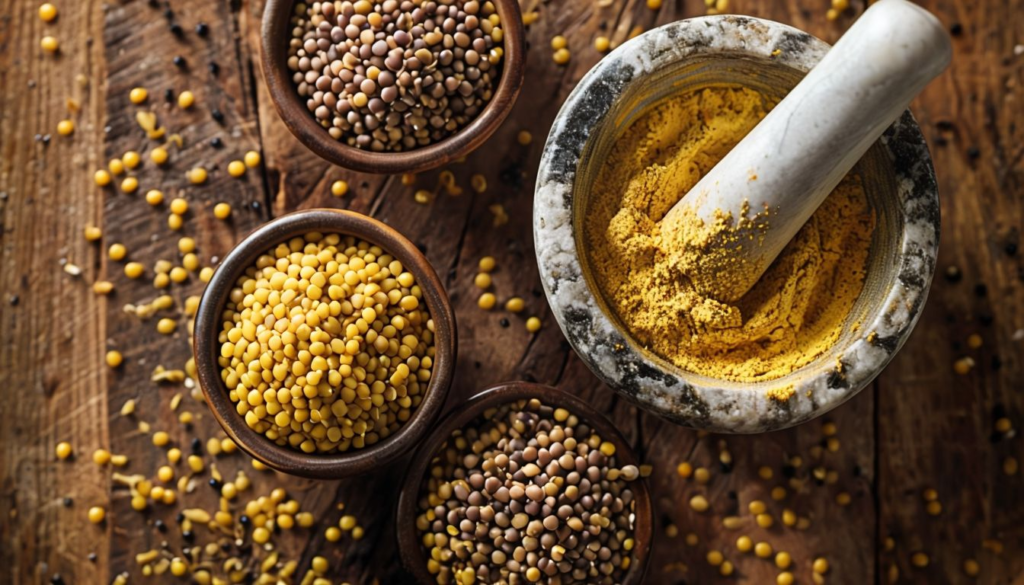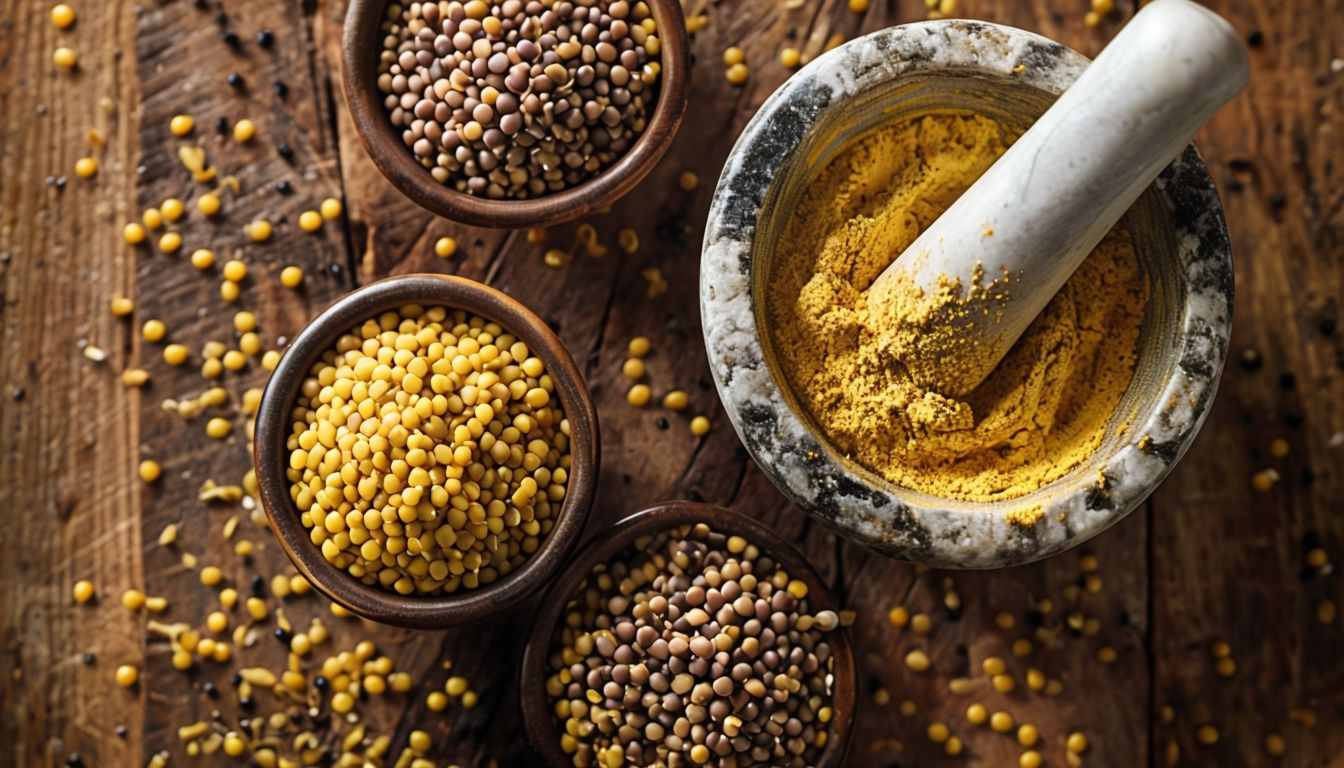
That moment when mustard seeds hit hot oil—the dramatic pop, the nutty aroma flooding your kitchen—is when ordinary cooking transforms into something extraordinary. These tiny golden, brown, or black specks hiding in your spice rack hold more power than you realize. Whether you’re making a quick weeknight stir-fry or an elaborate holiday feast, mastering mustard seeds will elevate your dishes from forgettable to extraordinary. Let’s unlock their full potential together.
- Why Mustard Seeds Deserve Prime Real Estate in Your Kitchen
- Step 1: Choosing Your Mustard Seed Allies
- Step 2: The Art of Toasting Mustard Seeds
- Step 3: Grinding for Maximum Impact
- Step 4: Tempering—The Secret Restaurant Technique
- Step 5: Storage for Long-Lasting Potency
- 3 Must-Try Mustard Seed Recipes
- Avoid These Common Mistakes
- Mustard Seed FAQ
- Your Next Culinary Adventure Starts Now
Why Mustard Seeds Deserve Prime Real Estate in Your Kitchen
Mustard seeds aren’t just for pickling or the occasional curry. They’re one of the most versatile spices globally, used everywhere from French Dijon to Indian tadka. When you understand how to harness their magic, you’ll discover:
- Texture play: Whole seeds add satisfying crunch to salads and rice dishes
- Flavor layering: Toasting unlocks deep, smoky notes while tempering in oil releases pungent warmth
- Health boosts: Packed with selenium (supports thyroid function) and omega-3s (anti-inflammatory)
Pro Tip: Chef’s swear by keeping all three varieties—yellow, brown, and black—for different uses. Yellow seeds (mild) perfect for vinaigrettes, brown (spicy) for meat rubs, and black (bold) for Indian tempering.
Step 1: Choosing Your Mustard Seed Allies
Not all mustard seeds are created equal. Reach for:
- Yellow seeds when you want subtle warmth in creamy dressings or quick-pickled veggies
- Brown seeds for curries where they’ll bloom in ghee with cumin and turmeric
- Black seeds (actually dark brown) when making Bengali shorshe ilish or other fish dishes
Storage Hack: Keep them in airtight jars away from light. Glass mason jars with rubber seals prevent aroma loss.
Step 2: The Art of Toasting Mustard Seeds
This 60-second technique changes everything:
- Heat a dry skillet over medium (no oil yet)
- Add seeds in a single layer—they should sizzle on contact
- Shake constantly until you hear popping (like miniature popcorn)
- Immediately transfer to a plate to stop cooking
Watch For: The color change from dull to glossy. Burnt seeds turn bitter, so err on the side of under-toasting.
Step 3: Grinding for Maximum Impact
That store-bought mustard powder? It’s lost 70% of its volatile oils. For vibrant flavor:
- Use a dedicated coffee grinder or mortar/pestle
- Grind small batches (2-3 tbsp at a time)
- Add a pinch of salt to stabilize the oils
Game-Changer: Freshly ground mustard + honey + apple cider vinegar = best honey-mustard glaze for roasted Brussels sprouts.
Step 4: Tempering—The Secret Restaurant Technique
Called “tadka” in Indian cooking, this method infuses oils with flavor:
- Heat oil/ghee until shimmering
- Add mustard seeds and cover immediately (they’ll pop wildly)
- When popping slows (15-20 seconds), pour over finished dishes
Perfect For: Lentil soups, sautéed greens, even scrambled eggs.
Step 5: Storage for Long-Lasting Potency
Preserve those precious oils by:
- Storing in glass (plastic absorbs aromas)
- Keeping away from heat sources (not above the stove!)
- Labeling with purchase date (best within 1 year)
Revival Trick: If your seeds seem dull, dry-toast a small batch to reactivate oils before use.
3 Must-Try Mustard Seed Recipes
1. 5-Minute Tempered Green Beans
- Sauté 1 tsp brown mustard seeds in coconut oil until popped
- Add 1 lb trimmed green beans and 2 minced garlic cloves
- Toss with soy sauce and sesame seeds
2. Honey-Mustard Sheet Pan Chicken
- Coat chicken thighs with:
- 2 tbsp ground yellow mustard seeds
- 3 tbsp honey
- 1 tbsp olive oil
- Roast at 400°F with sweet potatoes
3. Quick-Pickled Red Onions
- Combine sliced onions with:
- 1 tbsp yellow mustard seeds
- 1 cup vinegar
- 1 tsp sugar
- Refrigerate 1 hour
Avoid These Common Mistakes
- Overcrowding the pan when toasting (leads to uneven heating)
- Grinding too far ahead (flavor fades within hours)
- Using high heat for tempering (burns the seeds before they pop)
Mustard Seed FAQ
Q: Can I use mustard powder instead of seeds?
A: In a pinch, yes—but the flavor won’t have the same complexity. Use 1 tsp powder per 1 tbsp whole seeds.
Q: Why do my mustard seeds taste bitter?
A: You likely overheated them. Next time, remove from heat the moment they start popping.
Q: Are black mustard seeds spicier?
A: Surprisingly, no—brown seeds pack more heat. Black seeds have an earthier, more aromatic quality.
Your Next Culinary Adventure Starts Now
Those humble mustard seeds? They’ve been waiting to transform your cooking from mundane to memorable. Start small—toast a teaspoon tonight to finish roasted vegetables, or temper some for tomorrow’s dal. When you experience that first bite of your own mustard-seed-kissed creation, you’ll wonder how you ever cooked without them.
Challenge Yourself: Pick one new technique this week—tempering, grinding, or toasting—and tag us with your results. We’ll share the most creative uses!

